I remember my enthusiasm when I first stumbled upon the Adverse Childhood Experiences (ACEs) study. Coming from a healthcare background and frustrated by the lack of focus on upstream prevention, I remember how excited I was to learn about this “new” way of thinking about health and behavior–a way that focuses on root causes. In my eagerness to learn as much as I could about the emerging trauma-informed care movement, I brought this topic up to as many people as I could to learn more. In one of those conversations, something that a colleague with a school-based mental health background said really struck me: “None of this is new–we have been talking about these concepts in school-based mental health for decades. It’s just new language.” That point has stayed with me since.
We all know that language matters. A lot. Miscommunication can have potentially deadly consequences in settings like an air traffic control tower or an emergency room. Language can also change over time. The term “queer” had a very different connotation a few decades ago than it does today. And on a lighter note, when my wife was living in Spain for a couple of months in college, there was definitely an awkward moment when she intended to tell her host family she was embarrassed but instead told them she was pregnant (“embarazada” and “embarrassed” are examples of false friends–words in different languages that look or sound similar but have very different meanings.).
Andi and I talk a lot about the language we use to describe what we do at Origins. When I worked in healthcare and people asked me what I did professionally, the answer was somewhat straightforward. Even though “strategic planning” and “consulting” are a little more vague than concrete professions such as a physician or a nurse, most people had some general understanding of what I was talking about.
I stumble with answering that same question a little more now. Through Origins, Andi and I support leaders in building more resilient organizations and communities through the integration of trauma-informed practices and principles and a resilience-building approach. When explaining this to people steeped in the language of ACEs and resilience, I usually get head nods and excitement to talk more deeply about the subject. But when talking to people who have not been swimming in the sea of that language, our description elicits more of a question than an answer. I tend to get a blank stare or something of that sort. What in the world is a trauma-informed approach?
The Substance Abuse and Mental Health Services Administration, known as SAMHSA, offers a pretty succinct definition. SAMHSA describes a trauma-informed approach as one that understands the impact of trauma and responds by integrating that knowledge into policies, procedures, and practices.
But layered on top of this definition are all of the related terms…trauma-responsive, resilience, ACEs, intergenerational trauma, toxic stress, psychological trauma, adaptive behavior…the list goes on.
And the related questions…should the language we use be more focused on trauma or resilience? When someone refers to ACEs, are they referring just to the ten ACEs from the original study or are they also talking about Adverse Community Experiences such as discrimination, poverty, and community violence? When a school is implementing this approach, are they using the same language as other resources in the community such as juvenile justice or child welfare? In any setting, does trauma-informed refer just to the interventions with clients or is there something more? It’s all a bit mind-boggling.
It is because of these questions that Andi and I created The Basics, a foundational workshop that provides an overview of the key concepts–the “what” behind a trauma-informed and resilience-building approach supporting the establishment of a shared language. (And for those who have already started this process, The Resilience Champion–the “how” behind this approach. The Resilience Champion workshop series offers support for implemenation of a trauma-informed approach within an organizationa or community.
One of the primary goals of The Basics is to create a shared language that can be used across a variety of sectors, including healthcare, education, social services, child welfare, criminal justice, or in a community-based approach.
Because there is a big difference between being embarrassed and being pregnant.







 Getting Started: A Guide from Trauma to Resilience
Getting Started: A Guide from Trauma to Resilience
Leave a Reply
Want to join the discussion?Feel free to contribute!